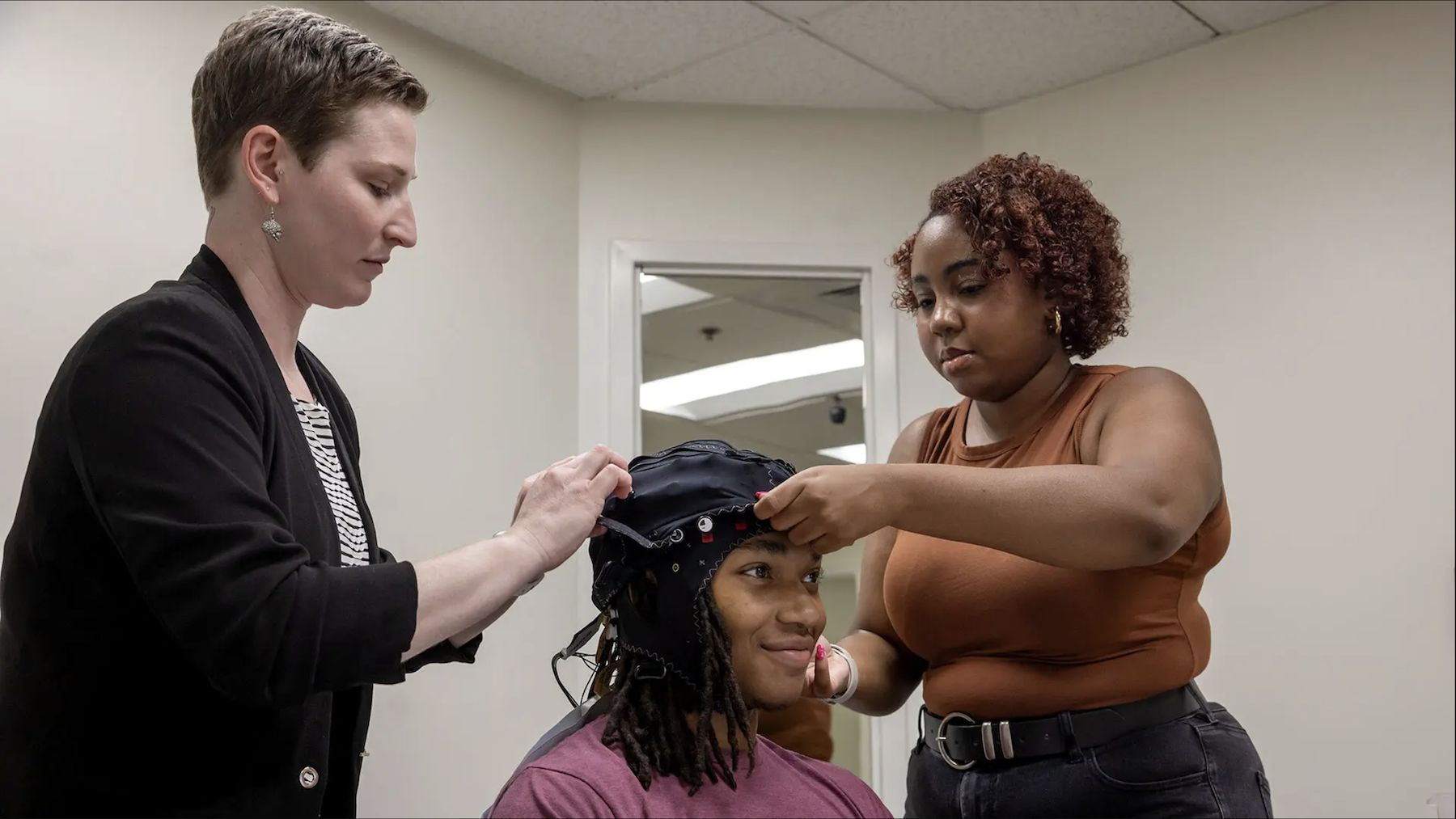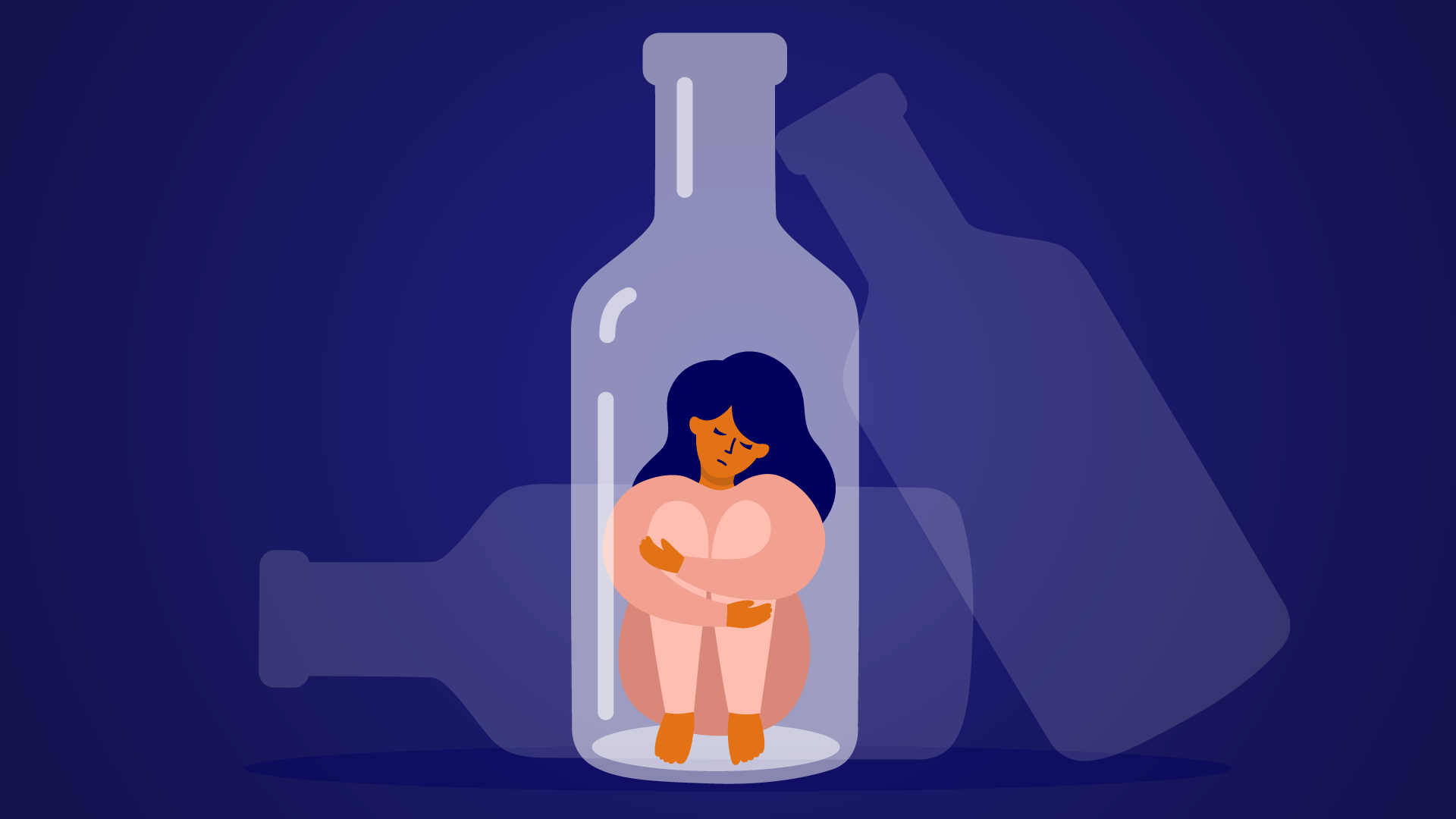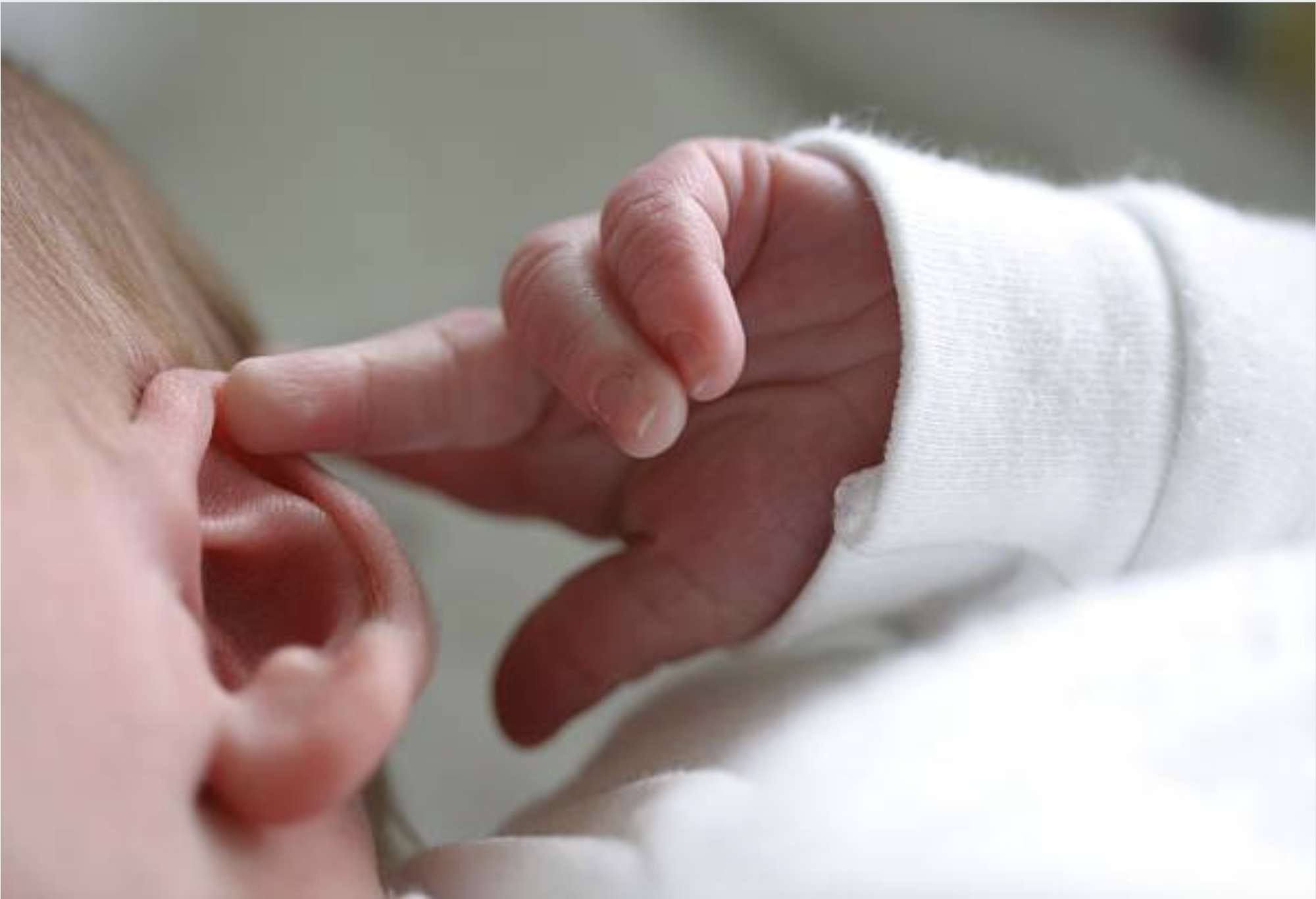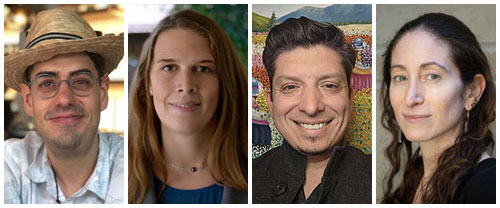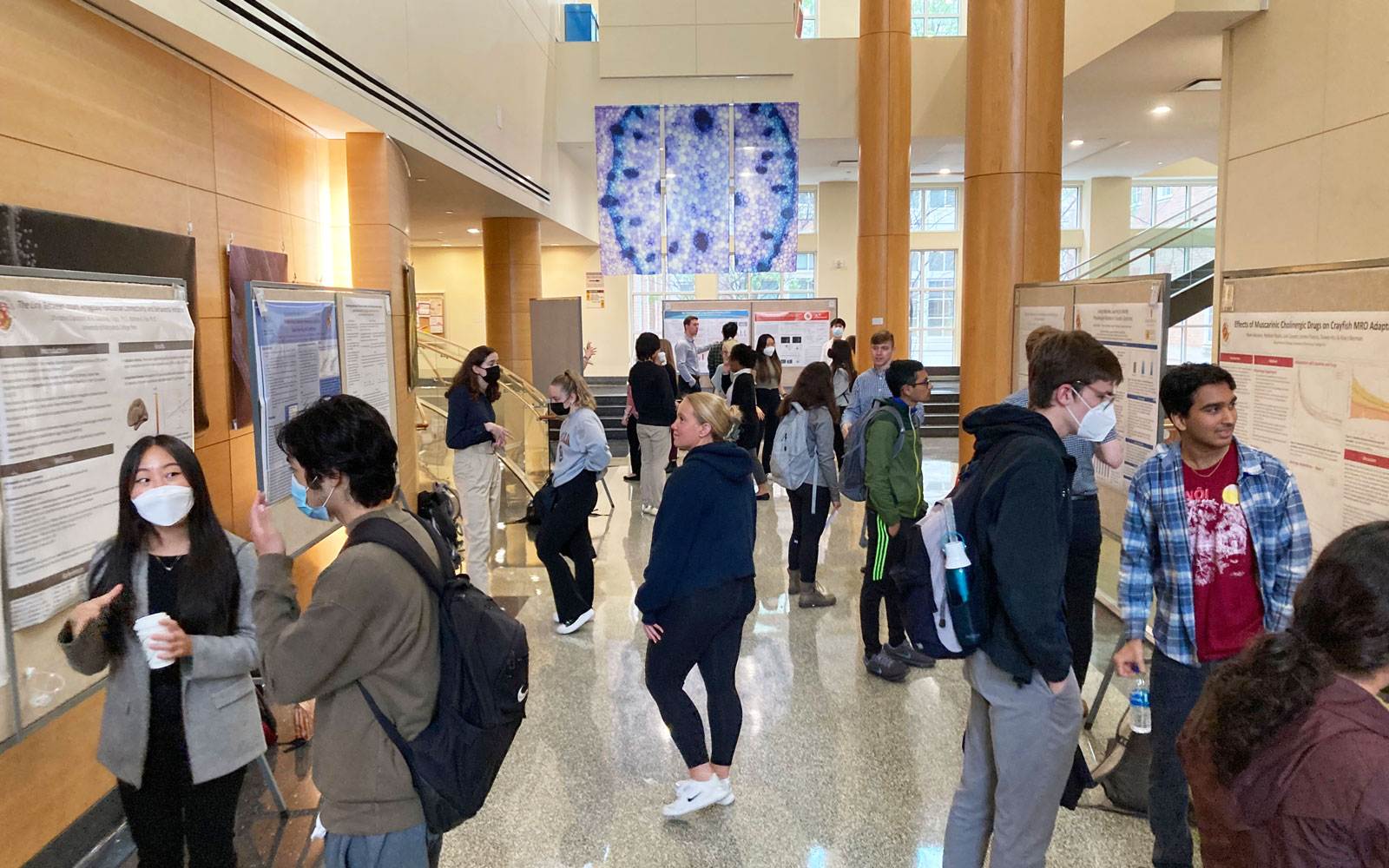News Story
Creative Movement, 'On Display'
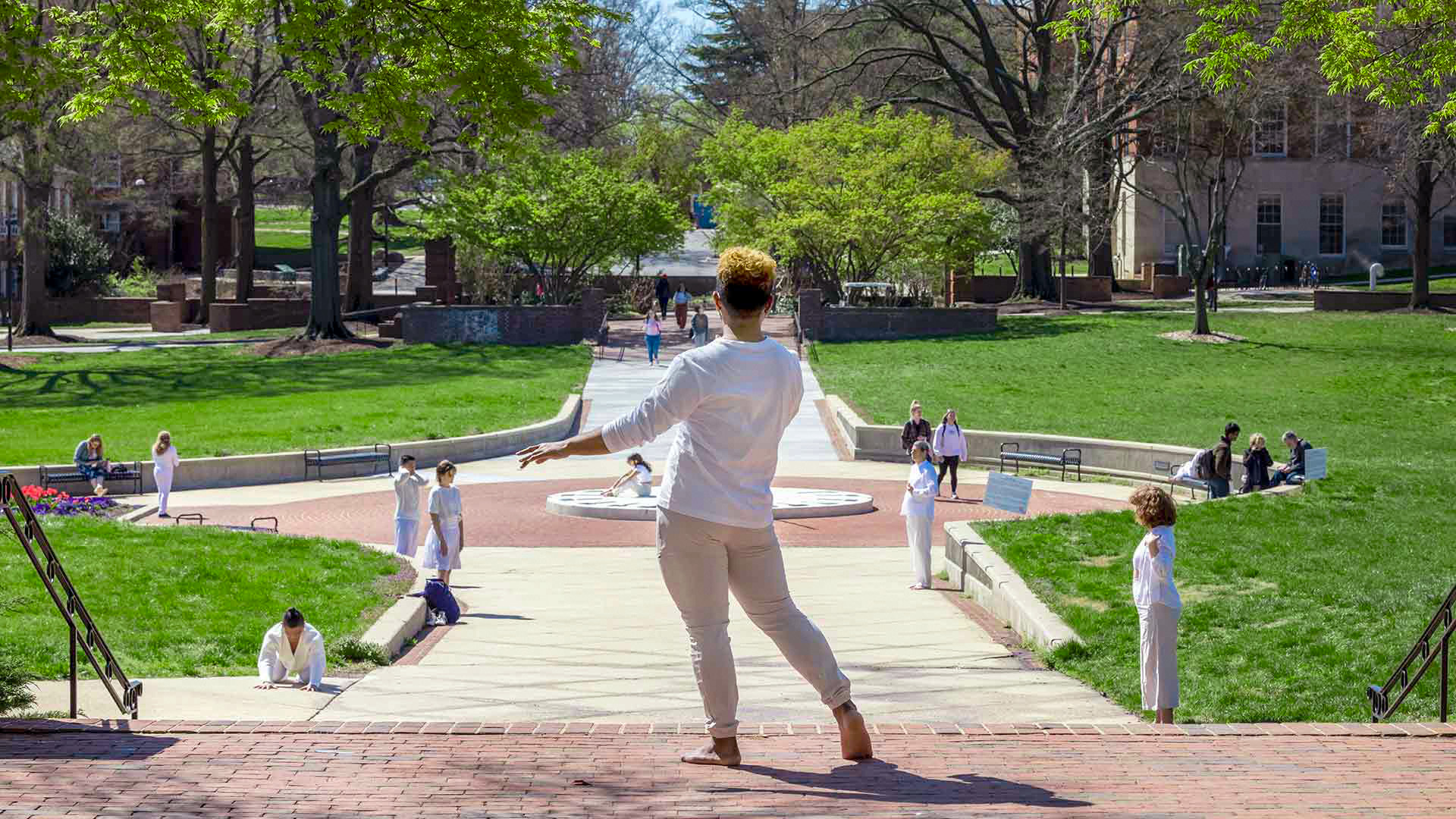
Human sculptures, wearing white, pose on McKeldin Mall on Friday as part of “On Display,” an art installation that celebrates diverse body types. Photo by Stephanie S. Cordle
At the center of McKeldin Mall, a sunny, bustling hub of crisscrossing Terps on their way to and from class, nine people dressed in all white stand completely still. One poses at the head of a bed of tulips, arms outstretched. Another slouches on the sundial, while still another lies motionless on a bench. They barely bat an eye as passersby pause, stare or even snap a picture.
These human sculptures on Friday formed the University of Maryland’s version of “On Display,” an art installation that displays and celebrates a diverse array of people to expand ideas of inclusion. After Friday’s on-campus exhibit, performers presented the work at Wolf Trap in Vienna, Va., as part of the weekend’s 2022 International Workshop on the Neural and Social Bases of Creative Movement, co-sponsored by the Brain and Behavior Institute (BBI), which brought together researchers and artists to explore the science of dance.
“If you’re not used to seeing a certain kind of person, you’ll stare. But we’ve been taught not to stare, so we avoid,” said dancer and choreographer Heidi Latsky, organizer of “On Display.” “With a sculpture court, they’re not moving. This gives passersby … an opportunity to look. Maybe they’ll really look, and they’ll change the way they see others in their day.”
Latsky began “On Display” in 2015 in New York City to honor the 25th anniversary of the Americans with Disabilities Act, showcasing a cast with not only different physical abilities, but also a range of races, ethnicities, sizes and ages. That sparked hundreds of performances around the world since, including global events every Dec. 3, the United Nations’ International Day of Persons With Disabilities. During the pandemic, the exhibit was held as a 24-hour Zoom performance, with performers from more than 30 countries.
In each installation, participants are instructed to pose in one position as long as they can, then subtly “morph” as they listen to their body.
“When people really drop into the experience, when they really embody what I’m asking them to do, it’s glorious. It’s intense for them, and it’s beautiful for the audience,” Latsky said. “The mind-body connection—when it works, you really see who they are. They lose their self-consciousness.”
That idea meshed with the international workshop’s overall mission to examine how creative movement manifests in the brain and can enhance quality of life, said Shihab Shamma, one of the conference’s organizers and a professor in UMD’s Department of Electrical and Computer Engineering, Institute for Systems Research, and the BBI.
“Inviting other people to watch you is an incredibly strong statement. At the same time, the amazement that we feel watching them … it’s a two-way street,” Shamma said. “What is it about these activities that make our brain react the way it does?”
One of the conference partners was UMD’s Arts for All initiative, which seeks to make the arts more inclusive, connect them to technology and advance social justice.
“‘On Display’ is powerful in part because it is accessible to everyone and invites us all to consider how we view and are viewed,” said Arts for All director Patrick Warfield.
Friday’s UMD participants, including students, faculty and other members of the community, found the hour-long posing and stillness empowering, but also mentally challenging—especially as scooters whizzed by, a dog romped on the grass and fellow Terps curiously approached them.
“As a psychology student, you learn about how your brain is always subconsciously working. It was really difficult to stop and be in the moment,” said Briti Nebhnani ’25, who also studies computer science and takes dance classes at UMD. “I think (the exhibit) was a really good play on what Heidi was trying to say.”
–Original story by Annie Krakower in Maryland Today
Published April 11, 2022
